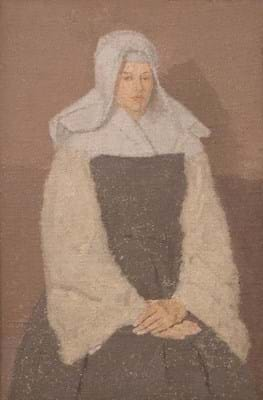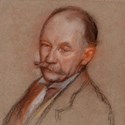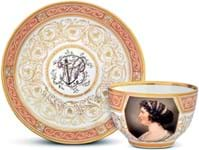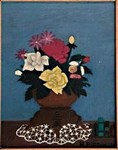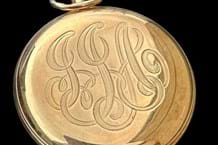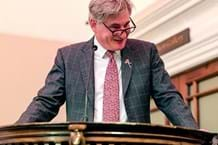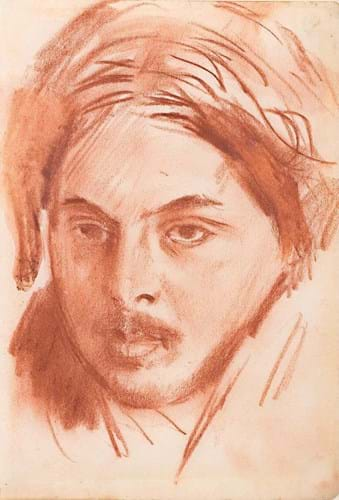
Augustus John, Portrait of Percy Wyndham Lewis, c.1905, red chalk on paper, 7 x 5in (18.5 x 12.5 cm). It is one of the works featured at the Piano Nobile exhibition.
Thirty early works by Augustus John (1878-1961) star at Piano Nobile this spring alongside those by the young circle of artists who filled his early life such as his sister Gwen (1876- 1939), William Orpen (1878-1931) and Jacob Epstein (1880-1959).
Running from April 26-July 13 in Holland Park, west London, the show looks at his early promise and the impact he had on his peers and subsequent generations of artists - an intriguing question as he sometimes occupies an uncertain position in the history of art.
In his day he was highly esteemed, particularly in his precocious early years. Henry Tonks, his tutor at the Slade, said that John was part of a “crisis of brilliance” at the school (the phrase gives the exhibition its title). John’s contemporary Virginia Woolf called him the “saviour” of British painting, coming after the age of Sargent and Furse. His works combined impressionist techniques, strong draughtsmanship and poetic sentiment to create a powerful style.
But he was criticised as well. In 1938, Anthony Blunt wrote famously: “Everyone is agreed on the fact that Augustus John was born with a quite exceptional talent - some even use the word genius - and almost everyone is agreed that he has in some way wasted it.”
In some cases, his output was overshadowed by his life, defined by a glamorous circle of friends, bohemian lifestyle and publicly tumultuous romantic affairs.
Though he is still well known today, in the years after his death his younger sister Gwen has become arguably the more celebrated of the pair. When an auction record was set for the brother in 2021 ($390,000 at Christie’s New York), ATG’s Art Market columnist suggested that some experts still find his works undervalued (ATG No 2488).
Recently he has been the focus of a retrospective at Liverpool Museums’ Lady Lever Art Gallery (The Last Bohemian: Augustus John, 2021) as well as commercial shows including one at the now-closed Martin Tinney Gallery in Cardiff (2022).
Life stories
This exhibition follows a recent biography, Brilliant Destiny: The Age of Augustus John (2023) by David Boyd Haycock, who is also curator of the exhibition at Piano Nobile.
The catalogue essay by the author examines the artist’s various reputations and concludes with the question: “Can we accept the notion of artistic ‘genius,’ and if we do, can we accept John as such?”
Whether or not we do, Haycock argues, it is impossible to ignore John’s influence during his life and beyond.
Acting as a sort of illustrated history of the artist’s early years, pictures in the show range from the beginning of his career until its abrupt shift at the start of the First World War. It features some of the pictures he drew of his friends before they went on to fame and fortune of their own - for example, a 1905 portrait of painter and critic Percy Wyndham Lewis in red chalk.
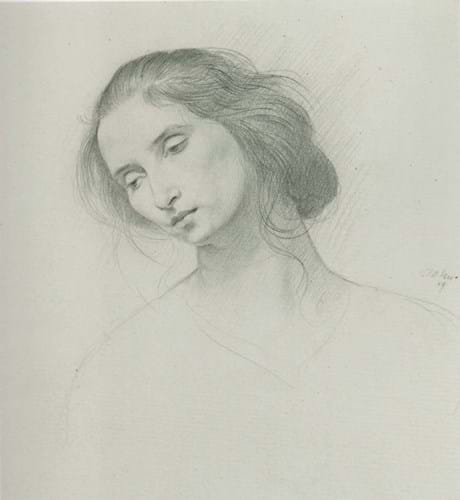
Augustus John, Dorelia, 1909, graphite pencil on paper, 10 x 6in (25 x 16.5cm), another of the works featured at the Piano Nobile exhibition.
A 1906 portrait shows Dorothy ‘Dorelia’ McNeill (1881-1969), who became his lover (living with him and his wife Ida Nettleship) and life-long model. It joins several other pictures of the women - many artists in their own right - who surrounded and inspired John and his circle.
Also on offer are some of the hundreds of Snowdonian landscapes John made on several trips back to his homeland from 1911-13 with fellow students James Dickson Innes (1887-1914) and Derwent Lees (1884-1931), along with several such pictures by these companions.
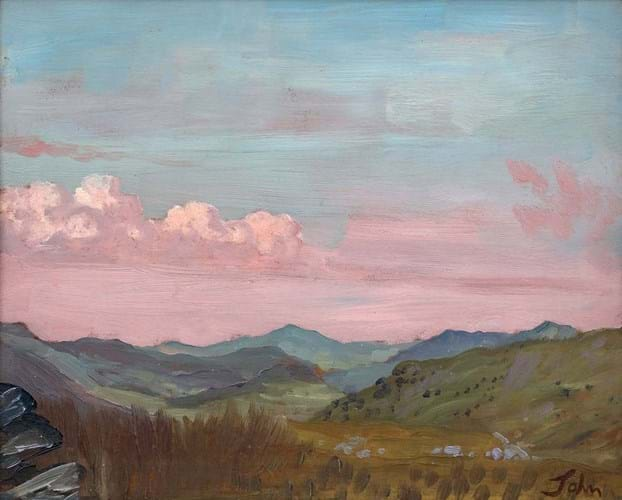
Augustus John, Landscape in Wales, c.1911-13, oil on panel, 12 x 16in (32.5 x 40.6cm), another of the works featured at the Piano Nobile exhibition.
There was an abrupt end to this formative period of John’s career. In 1914, Innes died of tuberculosis and Lees shortly after entered an asylum following a diagnosis of schizophrenia. John entered service as a war artist, and afterwards focused on celebrity portraits.
Many of the works on show are offered at prices ranging from around £10,000-350,000, and there are also a number of loans from private collectors as well as Ben Uri Gallery and Museum and Southampton City Art Gallery.


